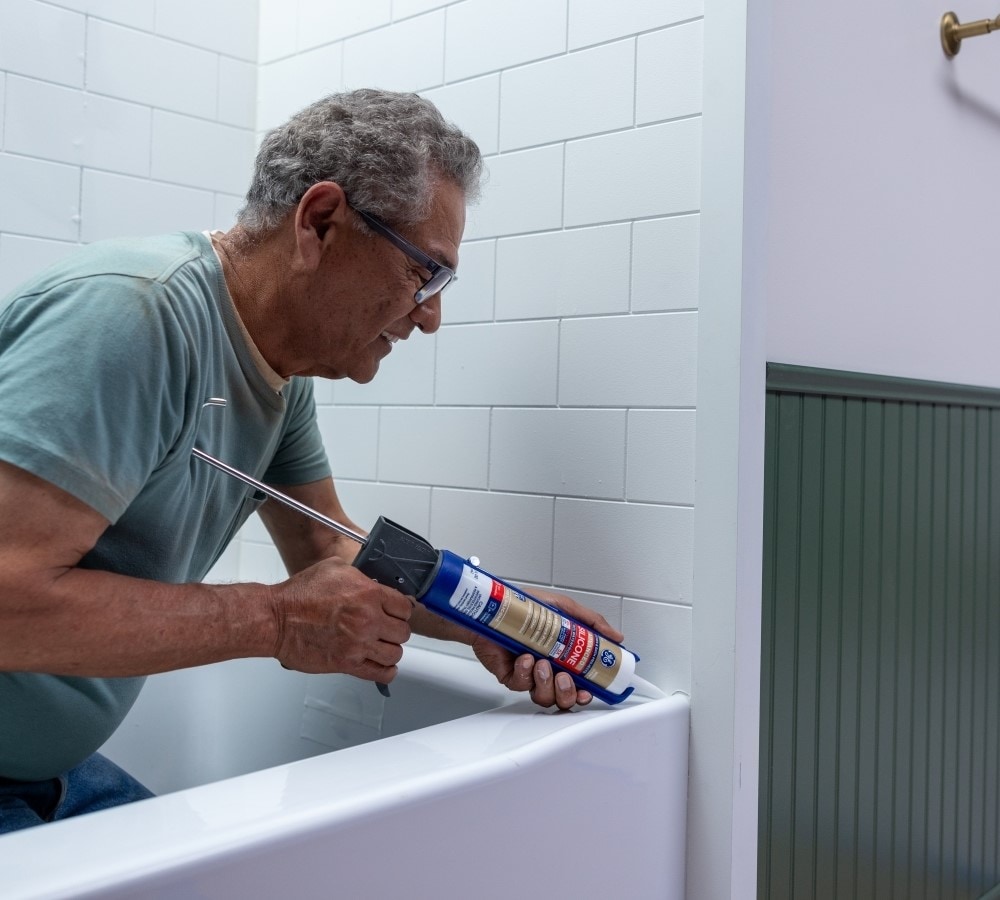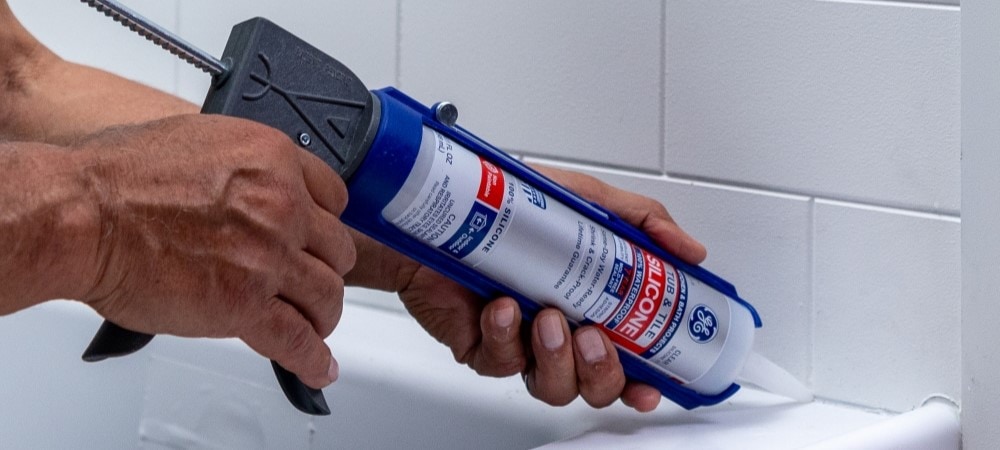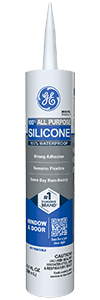Best products and tools for professionally caulking a tub
A bathtub is not just a functional part of your bathroom; it’s a sanctuary where you unwind after a long day. However, if there’s one thing that can quickly detract from your relaxation time, it’s a leaky bathtub. Caulking a tub is essential to prevent water damage and maintain the integrity of your bathroom. But with so many caulking products on the market, which ones should you choose for the best results? In this guide, we’ll explore the top products to use while caulking a bathtub.
Types of caulking for bathtubs
There are a variety of caulks and sealants to choose from that will work with a bathtub or shower. The most common varieties include:

For a bathtub, you need a product that is 100% waterproof and will give the tub a tight seal that prevents water leaking and damage. Some sealants designed specifically for kitchen and bathroom projects have additives that help make them mildew- and mold-resistant. There are also tinted versions available to give you a better color match to your bathtub and surrounding materials.
Choosing a waterproof product is crucial when caulking a bathtub. You also want something that is mildew- and mold-resistant.
Pros and cons of using silicone sealant in your bathtub
Silicone sealant serves a multitude of purposes in your bathtub area.
-
Pros of Silicone Sealant
- 100% Waterproof: Silicone sealant forms a watertight seal, making it perfect for wet environments like the bathroom.
- Flexible: Its flexibility allows for natural expansion and contraction without cracking, ensuring long-lasting performance.
- Mold and mildew resistant: Silicone is naturally resistant to mold and mildew growth, keeping your bathroom cleaner and healthier.
- Easy to apply: Silicone sealant is easy to apply and can be smoothed out with a wet finger for a clean finish.
- Wide temperature range: Silicone sealant remains stable across a wide temperature range, making it suitable for both indoor and outdoor use.
-
Cons of Silicone Sealant
- Surface requirements: The surface needs to be well-prepped to achieve optimal adhesion.
- Difficult to remove: Once cured, silicone sealant can be challenging to remove, requiring special solvents or tools for extraction.
- Not paintable: Silicone sealant is not paintable.
-
Life Expectancy of Silicone Sealant
The life expectancy of silicone sealant in a bathtub depends on various factors, including the quality of the product, application technique, and environmental conditions. On average, silicone sealant can last anywhere from 5 to 20 years in a bathroom setting. Proper maintenance, such as regular cleaning and inspection for signs of wear or damage, can help extend its lifespan.
Pros and cons of using hybrid sealant in your bathtub
Hybrid sealant is a versatile option that offers qualities of silicone mixed with other materials.
-
Pros of Hybrid Sealant
- Durability: Hybrid sealant offers stronger durability compared to pure silicone sealant, thanks to the combination of materials that enhance its strength and resilience.
- Flexibility: Its flexible nature allows the hybrid sealant to maintain a tight seal even as the bathtub and surrounding surfaces expand and contract with temperature changes and use.
- Waterproofing: Hybrid sealant provides 100% waterproofing capabilities, effectively sealing gaps and preventing water damage to the walls, floors, and subflooring around the bathtub.
- Mold and mildew resistance: Many hybrid sealants contain additives that inhibit the growth of mold and mildew, reducing the need for frequent cleaning and maintenance in the bathroom.
- Versatility: Hybrid sealant can be used in various applications beyond the bathtub, making it a versatile choice for sealing gaps and cracks in other areas of the home as well.
-
Cons of Hybrid Sealant
- Affordability: Typically more expensive than pure silicone or acrylic latex caulk.
- Curing time: May have a longer curing time compared to other types of caulk. Typically cures completely in about 24 hours.
- Application difficulty: Can be more challenging to apply than acrylic latex caulk due to its thicker consistency, requiring a steady hand and proper technique for a neat finish.
-
Life Expectancy of Hybrid Sealant
The life expectancy of hybrid sealant in a bathtub can vary depending on factors such as product quality, application technique, and environmental conditions. On average, hybrid sealant can last anywhere from 5 to 15 years in a bathroom setting with proper maintenance and care.
Pros and cons of using acrylic latex caulk in your bathtub
Acrylic latex caulk is a versatile product that may work in your bathtub.
-
Pros of Acrylic Latex Caulk
- Affordability: Acrylic latex caulk is generally more budget-friendly when compared to other types of sealants, making it an attractive option for cost-conscious consumers.
- Easy application: Acrylic latex caulk is easy to apply with a caulking gun and can be easily smoothed for a neat finish, even for DIY enthusiasts.
- Paintable: Once cured, acrylic latex caulk can be painted.
- Flexibility: Acrylic latex caulk is flexible, even when cured. This allows for continued sealing even as gaps shift.
-
Cons of Acrylic Latex Caulk
- Limited waterproofing: While acrylic latex caulk provides adequate sealing for small gaps and cracks, it does not offer the same level of waterproofing as silicone caulk, especially in high-moisture areas like bathtubs and showers.
- Durability: Acrylic latex caulk is not as durable as silicone caulk, particularly in environments prone to frequent temperature changes or heavy moisture exposure, leading to potential cracking or degradation over time.
- Not mold-resistant: Unlike silicone sealants, acrylic latex caulk can develop mold as it gets exposed to moisture.
-
Life Expectancy of Acrylic Latex Caulk
The life expectancy of acrylic latex caulk in a bathtub can vary depending on factors such as product quality, application technique, and environmental conditions. On average, acrylic latex caulk can last anywhere from 2 to 10 years in a bathroom setting with proper maintenance and care.
Finish your bathtub caulking project with help from GE sealants
Considering all the pros and cons for each type of caulk, GE recommends using silicone sealant because it is 100% waterproof, mold-resistant, highly flexible, and durable.

No matter what type of bathroom project you have, there is a GE sealant product to help. GE sealants come in a range of options including silicone, acrylic latex caulk, and hybrid sealants.
Make sure you choose a high-quality GE sealant product for your next bathroom project.



